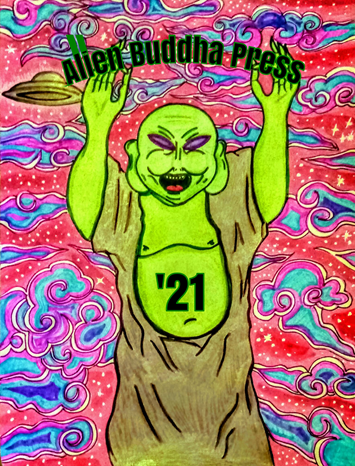|
The Breadcrumbs widget will appear here on the published site.
Presidential Choices Matter: Kid EditionWords by Ruth Ebenstein Photos by Michael Fried QuailBellMagazine.com *Editor's Note: First published on Medium. “Would you like a president that encourages people to recycle, or one that drops trash on the ground?” “Would you like a president to help everyone, or only some people?” “Should a president use his/her words to solve problems? Fourteen fresh-faced kindergarteners, ages 4 to 6, sat cross-legged on multicolored carpeting. They were soon headed to the lounge of their elementary school, Hebrew Day School of Ann Arbor, to vote in their first presidential election. Debbie Carbone, their teacher, was encouraging them to consider the character traits of the individuals running for office in order to make an informed choice. “Every time you make a decision, you want to choose what’s right for you,” said Debbie. On the ballot were two candidates who had once campaigned in a partisan contest full of name-calling: John Adams and Thomas Jefferson. Seeking to step away from this year’s ugly presidential election, the Hebrew Day School of Ann Arbor decided to play out in the halls and classrooms a different nasty election, the election of 1800, as a means to experience firsthand a modern election process. Spearheaded by Laura Pasek, a 3rd and 4th grade general studies teacher, 16 students were divided between incumbent John Adams, a Federalist, and Vice President Thomas Jefferson, a Democratic Republican. “I wanted distance from the Clinton-Trump election to allow students to think critically for themselves,” said Pasek. Like live theater performed on an historical stage, the 8- and 9-year-old students acted out every phase of a presidential election: party conventions, campaign rallies, debates, and Voting Day. Fittingly, the headline-grabbing issues of some 200 years ago resonated with those of today: the Alien Acts made it more difficult for immigrants to become citizens and sanctioned deporting non-citizens who were deemed dangerous while the Sedition Acts restricted speech critical of the federal government. Also echoing current discussions were debates on the appropriate size and role of government. The simulation model has roots in the research of University of Michigan lecturer Jeff Stanzler, who also directs the Interactive Communications and Simulations (ICS) group, along with his faculty colleagues, Michael Fahy and Jeff Kupperman. The group, based at the University of Michigan School of Education, creates and facilitates web simulations for upper elementary-, middle-, and high-school students. The model encourages the use of historical figures to address modern dilemmas through role play.  My 8-year-old son came home chatting about Jefferson, motivated to work with his teammates to develop persuasive arguments and winning campaign materials. Their team deemed one particular slogan powerful and persuasive for the demographic: Jefferson brought ice cream to the US and popularized it. But could that trounce the fact that he was the principal author of the Declaration of Independence—and owned slaves? Eitan’s team formulated an argument for ending slavery: “Slavery is bad, but it should be banned without going to war.” Weeks later, the argument was presented at the podium when the students debated as Adams and Jefferson, focusing on the size and role of government, the Alien and Sedition Acts and slavery. Striking was the cordial tenor; all the politicians were civilized and appropriate—because they had practiced many times. Finally, it was November 4, School Election Day. I pulled into the parking lot thirty minutes early. I wanted to hear campaigning from the John Adams team. Mia, 8, shared fresh facts she had discovered while researching her candidate. “John was a great pen pal,” she said, eyes shining. “He sent 1100 love letters to Abigail. He also established the first U.S. Marine Band and the first Academy of Arts and Sciences.”
Around the campaign tables school children huddled in conversation, engaged in history as an evolving dialogue. First-graders and second-graders crowded around the third and fourth graders, lolling questions about Jefferson and Adams. What are your major accomplishments? Why should I vote for you? Why couldn’t women vote in 1800? The kindergartners asked more basic questions. What is democracy? That afternoon, the 8- and 9-year-olds were the teachers, imparting lessons they had learned in class and on their own about their candidates and the electoral process. Sitting on the sidelines, I thought to myself, “These children really know how to make a compelling argument—and how to consider the perspective of someone else.” Therein lay the seedlings of empathy. In the end, history did repeat itself. Jefferson won, capturing 54.3 percent of the vote. And the even bigger winner? Livnat, 8, who gave Jefferson’s acceptance speech. She had originally sworn to her teacher that she would never speak in public—and then clamored to do so, overcoming her fear with great poise and confidence. The Election of 1800 in 2016 taught my son and his peers that their voices count: in the classroom, at school, with the grownups. It also taught them that every voter, and every vote, counts. So what swayed the youngest voters to choose Jefferson? For many kindergarteners, the winning ticket was whomever their older siblings had recommended. For others, it was the ice cream. But one young voter, Yehonatan, 5, formulated a heuristic of his own. “For me, it had to be Thomas Jefferson. He sounds just like Thomas the Tank Engine!” Many a voter has chosen candidates for lesser reasons than that. CommentsComments are closed.
|
|











